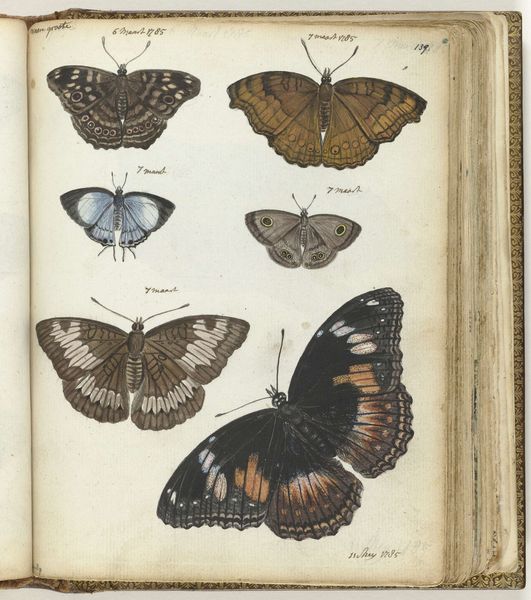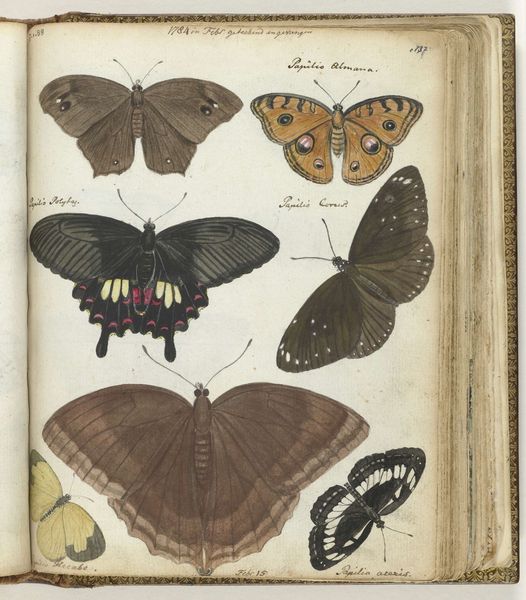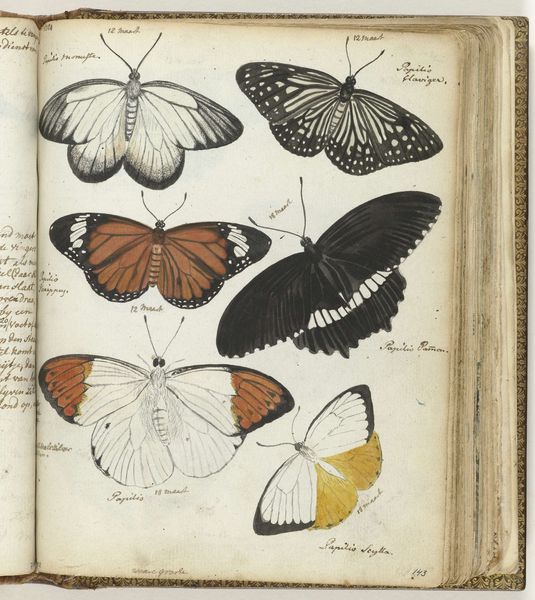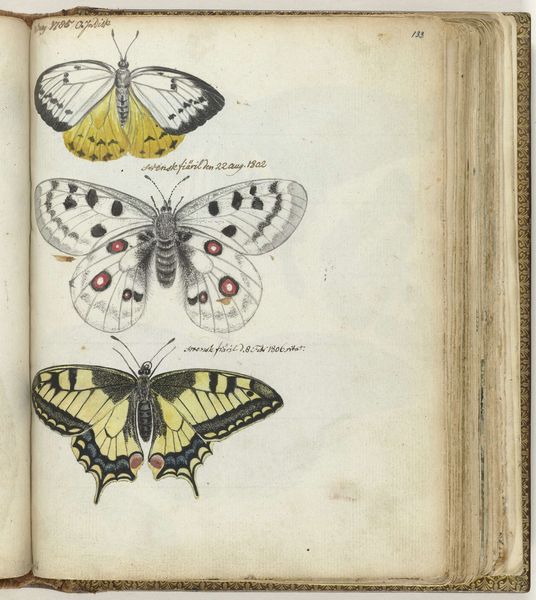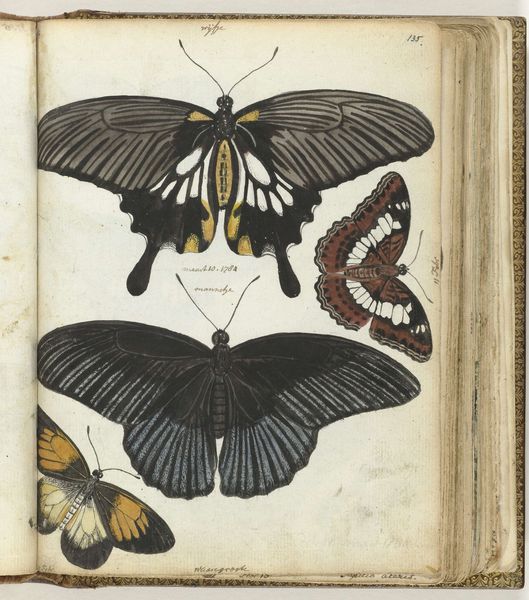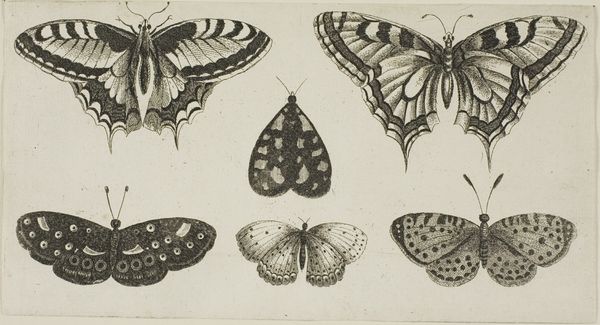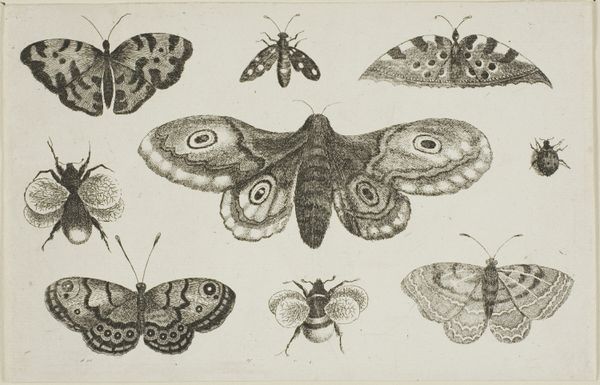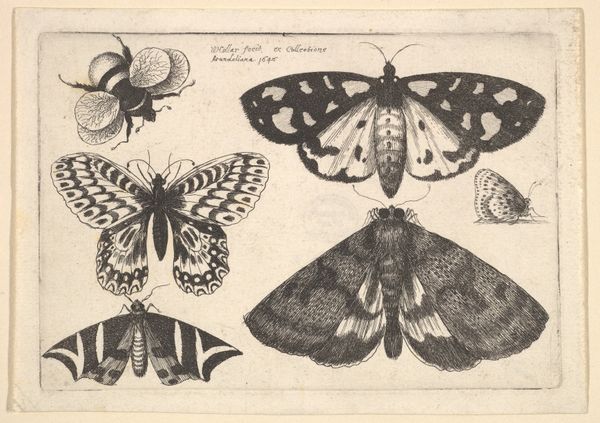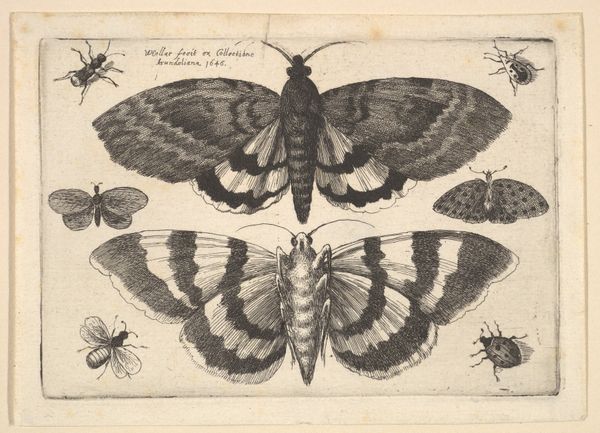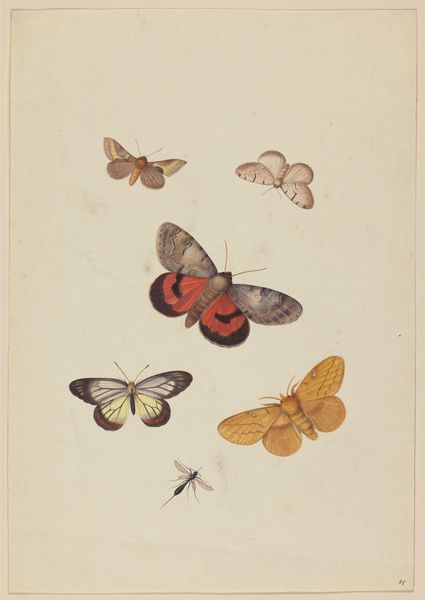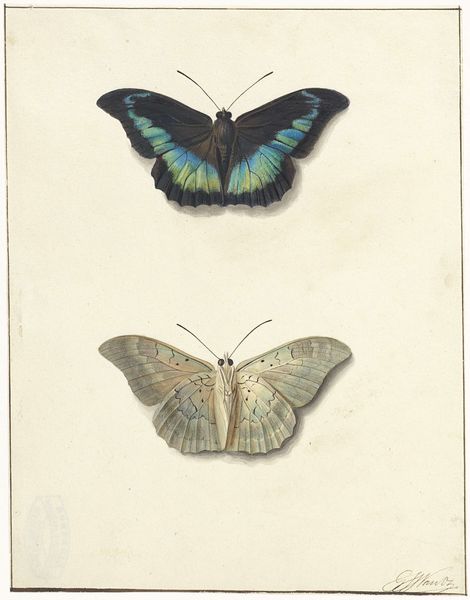
drawing, watercolor
#
drawing
#
water colours
#
figuration
#
watercolor
#
coloured pencil
#
botanical art
#
miniature
#
watercolor
#
realism
Dimensions: height 195 mm, width 155 mm
Copyright: Rijks Museum: Open Domain
Curator: The meticulous quality of Jan Brandes' "Javaanse Vlinders", created around 1784-1785, really strikes me. The watercolour medium allows for such delicate rendering of the butterflies. What do you make of it? Editor: There is a sense of order in this menagerie, like specimens pinned carefully on display. A quiet scientific curiosity permeates the work. Curator: Absolutely, it speaks to the Enlightenment's project of cataloging and classifying the natural world, doesn't it? Think about the socio-political context of the Dutch East India Company, for example. How does this imagery support imperial projects of resource extraction? Editor: Indeed. And in terms of symbolism, the butterflies themselves often represent transformation and rebirth. But placed like this, flattened onto the page, does that symbolism change? Is transformation stifled when brought under the control of the scientific gaze? Curator: I think the tension is inherent. Brandes, documenting the flora and fauna, walks a fine line between scientific documentation and artistic expression, highlighting both the wonder and the colonial drive for knowledge and control. Editor: There’s an elegance, too, though. The way each butterfly is subtly distinct, from the ‘Papilio Astina’ to the ‘Papilio Erymasithiy’ at the bottom of the page – they are so vibrant, despite their stillness. Even the script, so neatly added, feels purposeful. It contributes to the impression that something here has been named, labeled, claimed in a way. Curator: A claim certainly made stronger by Brandes' position within the Dutch East India Company. It’s easy to overlook how works like these reflect power structures and social inequalities within artistic and scientific production. Editor: It certainly leaves a lot to contemplate, as do these beautiful, yet frozen butterflies pinned on the pages, captured through watercolours that allow us a glimpse into another place and another time. Curator: A perfect intersection of art, science, and history, indeed. Thank you.
Comments
No comments
Be the first to comment and join the conversation on the ultimate creative platform.
